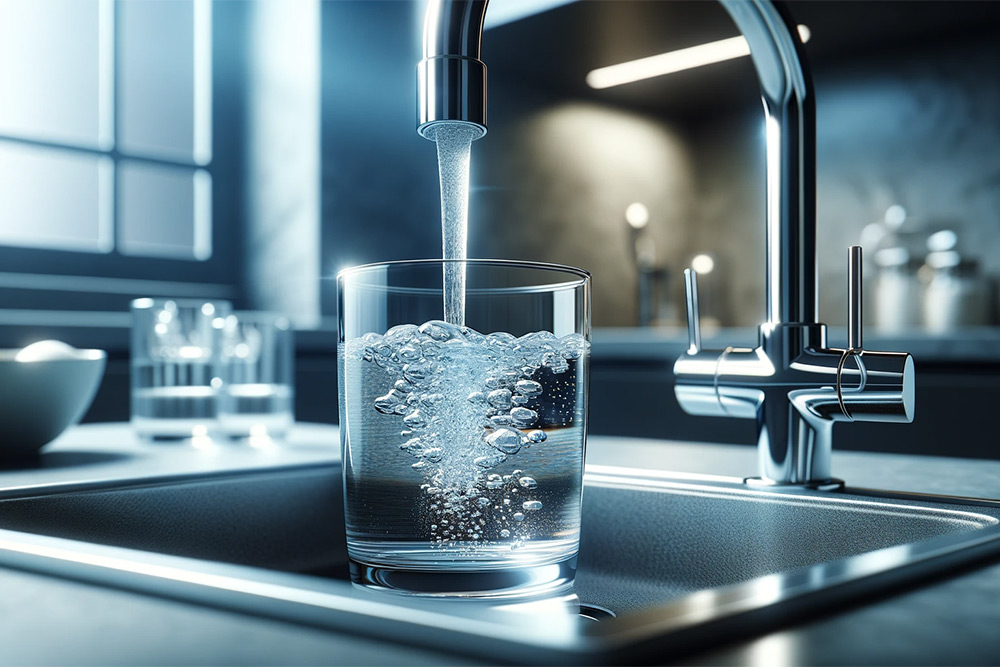In the pursuit of pure and clean water, various filtration technologies have emerged as stalwarts, each with its unique set of benefits. Among them, ultrafiltration (UF) and reverse osmosis (RO) stand out as two powerful methods. This article delves into the intricacies of ultrafiltration and reverse osmosis, comparing their processes, applications, and efficiency in delivering purified water.
Ultrafiltration is a membrane-based filtration process that operates on the principle of sieving out particles based on their size. The ultrafiltration membrane has pores that allow water molecules to pass through while blocking larger contaminants such as bacteria, viruses, and colloidal particles. It is a relatively gentle process that retains essential minerals in the water while removing impurities.
Reverse osmosis, on the other hand, is an advanced filtration process that relies on a semi-permeable membrane to separate contaminants from water. The process involves applying pressure to force water through the membrane, effectively blocking contaminants and allowing only pure water molecules to pass through. RO is renowned for its ability to remove a wide range of impurities, including dissolved salts, minerals, and other microscopic particles.
When it comes to purity levels, both ultrafiltration and reverse osmosis excel in their own ways. Ultrafiltration is highly effective at removing larger particles, such as bacteria and some viruses, providing water that is significantly cleaner than conventional tap water. However, it may allow certain smaller particles and dissolved substances to pass through, making it an excellent choice for water with moderate contamination.
Reverse osmosis, on the other hand, takes purity to the next level. The semi-permeable membrane used in RO is designed to block even the smallest impurities, including dissolved salts and minerals. The result is water that is exceptionally pure, often exceeding the standards set for drinking water quality. This makes reverse osmosis the go-to choice for applications where the utmost purity is non-negotiable.
Another crucial aspect of water purification technologies is their efficiency in water recovery. Ultrafiltration typically boasts a higher water recovery rate compared to reverse osmosis. Since UF membranes are designed to allow certain minerals and salts to pass through, the overall water recovery is higher, making it a more water-efficient process. This can be advantageous in regions facing water scarcity, where maximizing the use of available water resources is essential.
In contrast, reverse osmosis tends to have a lower water recovery rate. The process involves rejecting a significant portion of water containing concentrated impurities, leading to a reduced overall recovery. While this may be less water-efficient, the unparalleled purity achieved by RO compensates for the lower recovery rates, making it a preferred choice for applications where purity is paramount.
Energy efficiency is a critical factor in evaluating water purification methods, especially as sustainability becomes a central concern. Ultrafiltration generally requires less energy than reverse osmosis. The pressure needed for UF is lower, contributing to reduced energy consumption during the filtration process. This makes ultrafiltration a more environmentally friendly option for those looking to minimize their carbon footprint.
Reverse osmosis, however, demands higher pressure to force water through the tightly woven membrane, resulting in higher energy requirements. While advancements in RO technology have led to improvements in energy efficiency, it remains more energy-intensive compared to ultrafiltration. As a result, the choice between UF and RO should consider the environmental impact and the availability of energy resources.
The choice between ultrafiltration and reverse osmosis often depends on the specific needs and applications. Ultrafiltration, with its ability to remove larger particles while retaining essential minerals, finds applications in various settings. It is commonly used in drinking water treatment, wastewater treatment, and industrial processes where a moderate level of purity is required.
Reverse osmosis, with its unparalleled purification capabilities, is the technology of choice for high-purity applications. It is widely employed for desalination, producing drinking water from seawater, and in industries where the removal of microscopic contaminants is crucial. RO is also a popular choice for home water purification systems, ensuring that households have access to exceptionally clean and safe drinking water.
The longevity and maintenance requirements of water purification systems are essential considerations for both residential and industrial users. Ultrafiltration systems generally have a longer lifespan and require less frequent maintenance compared to reverse osmosis systems. The larger pores in UF membranes are less prone to clogging, contributing to a more robust and enduring filtration system.
Reverse osmosis systems, while highly effective, may require more frequent maintenance due to the finer nature of their membranes. Regular cleaning and replacement of RO membranes are essential to ensure optimal performance. However, advancements in membrane technology have led to improvements in the longevity and maintenance requirements of modern RO systems.
In the realm of water purification, the choice between ultrafiltration and reverse osmosis ultimately depends on the specific requirements of the application. Ultrafiltration shines in scenarios where a balance between purity and water efficiency is crucial, offering a gentler yet effective filtration process. Reverse osmosis, with its unmatched purity levels, is the technology of choice when the goal is to achieve the highest possible water quality.
Whether it’s for drinking water at home, industrial processes, or addressing water scarcity issues, understanding the virtues and considerations of ultrafiltration and reverse osmosis is paramount. Both technologies play pivotal roles in ensuring access to clean and safe water, contributing to a healthier and more sustainable future. As technology continues to advance, the ongoing refinement of these water purification methods will undoubtedly lead to even more efficient, environmentally friendly, and accessible solutions for communities worldwide.


